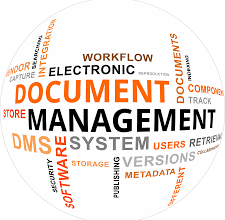Meeting your customers’ expectations is critical in an online economy dominated by huge retailers like Amazon. How long it takes you to ship products is a huge component of that.
Therefore, how can you exceed customer expectations, understand performance down to the Item level, and prevent wasting time that could be spent building your business?
By implementing proper inventory tracking. We’ll go over some inventory tracking best practices in this article. We’ll start by defining inventory tracking, then go over the primary benefits and obstacles. Following that, we’ll go over how to track inventory and compare inventory tracking system to supply chain management.
What is Inventory Tracking?
Inventory tracking is the systems and procedures a company uses to monitor how raw materials or completed goods move through the supply chain. Crucial to producing revenue, the goal is to have the proper amount of stock to match consumer demand.
What Is Inventory?
Inventory is a current asset on a balance sheet that represents supplies or items that convert to revenue through a sales transaction. There are various techniques to inventory management. Inventory is viewed as a liability in supply chain techniques that try to maintain inventory low, lean, or until demand drives supply.
What is an Inventory Management System?
Inventory tracking systems track inventory throughout your supply chain, from order to transit, receiving, storage, and order fulfillment—as well as the returns, exchange, and warranty processes, if necessary.
Companies employ reliable, real-time inventory tracking data to cut costs, assess supply chain patterns, and increase revenue. These tracking elements are frequently included in inventory management systems.
What is Tracked in Inventory Tracking?
Inventory tracking systems can often monitor the following data:
#1. Updated stock levels
This value indicates how much of each item you presently own. It’s critical to keep this data up to date so you know if you have enough stock for your company procedures, such as creating new items or fulfilling client requests. Furthermore, your stock levels serve as a foundation for the other data that is tracked.
#2. Inventory locations
In the best-case situation, your inventory should not be kept in one place for too long. (If it does, it has either become slow-moving or dead stock.) After the merchandise enters your warehouse, it moves around as it’s first sorted and categorized, then stored, and then eventually collected and sent to the next stage of your supply chain. As your stock doesn’t remain in a fixed position, it’s crucial to maintain track of its whereabouts so that you know where to find it if needed.
#3. Inventory precision
This is a key performance indicator (KPI) that refers to the ratio of inventory that has been tracked to inventory that is physically present in your possession. These numbers should ideally be the same, but there may be variations due to factors such as theft, damage, miscalculations, and supplier shortages. Inventory accuracy will reveal the magnitude of any differences. Inventory accuracy, like stock levels, is critical for your business processes to run effectively.
#4. Carrying expenses
This is the total amount of money that you spend on storing, holding, and owning inventory. This covers how much you spend on rent, labor, storage and applicable expenses, and security. Carrying costs can tell you how long your company can continue to store this inventory before losing money. Slow-moving inventory and dead stock are two primary contributors to high carrying costs, so if you’re seeking to lower those expenses, you’ll have to figure out a means to remove or sell the things.
#5. Inventory turnover
The rate at which your inventory is sold is referred to as inventory turnover. A greater value signifies stronger sales, whereas a lower value represents poorer sales. Inventory turnover can inform you how well your company is doing and whether your sales strategy needs to be tweaked. To calculate yours, use our free inventory turnover calculator.
#6. Rearrange levels
A reorder point or level is the amount of stock remaining for a certain item that must be replaced or refilled. Reorder points are critical for avoiding stockouts (situations where a seller runs out of stock).
#7. Inventory appraisal
As a company produces its financial statements, this practice is used to calculate the worth of unsold inventory. Inventory valuation assigns a financial value to your residual stock, which must be added to your balance sheet. This can also help calculate your inventory turnover.
Why is Inventory Tracking Required?
#1. Improved stock visibility
With inventory tracking, you can see every single one of your products from the minute they enter your warehouse or storage area until they leave. This means you’ll be able to see each product’s current location, available stock, relevant purchase and sales orders, and so on.
#2. Avoiding scarcity
With an accurate inventory of what you have, you can also determine what you don’t have and replace your stock in a timely manner. This will prevent you from running out of things and losing key sales. According to a Peoplevox poll, 34% of firms reported delivering orders late because they didn’t have the products in store but weren’t aware of this when the order was placed.
#3. Improved inventory forecasting
Getting an accurate count of your inventory at various periods of the year might help you determine or forecast how much inventory you’ll need to meet future demand. This can assist you in making informed purchasing selections and avoiding overstocking or understocking.
According to a McKinsey & Company analysis, organizations may cut their inventory expenditures by 10% simply by avoiding over- and under-stocking.
#4. Tracking several locations
Companies that store products in different storage areas or warehouses may have a more difficult time keeping track of all of their inventory. More warehouses mean longer strings of location information, more places to misplace goods, more places to have shelf counts, more places to arrange delivery from, and so on. As a result, certain inventory tracking systems provide tracking for numerous locations on a single platform. Accessing your data in a single location can surely help decrease the complexity of this data.
#5. Error detection is now faster.
Regularly tracking your inventory levels can also assist you in identifying irregularities early on, whether they signal errors, sales dips or spikes, or unanticipated expenses. If you spot these problems early on, you can fix them before they cause too much damage.
Techniques of Inventory Tracking
Inventory tracking methods differ depending on your sector, the type of goods you sell, and the amount you stock. Consider the following supply chain management principles, technology, and techniques.
#1. Manual Inventory Tracking
Individuals who aren’t ready to invest in an inventory tracking system frequently track their inventory with pen and paper. This strategy requires you to update a master data sheet that categorizes all inventory at regular periods or whenever a transaction occurs.
#2. Card System
Kanban, often known as the visual sign or card method, is a just-in-time (JIT) system for limiting surplus stock. Instead of attempting to forecast demand, Kanban is a pull system in which cards are used to track stock, production, and inventory and signal when more is required. The system was created by Japanese automakers, and the name Kanban is derived from the Japanese word for a sign.
#3. Spreadsheets
Spreadsheets are used to organize and categorize vast volumes of data. Nevertheless, manually inputting and managing data is prone to errors and is neither efficient nor scalable.
#4. Accounting Systems
By combining accounting and inventory management systems, you may create a strong inventory tracking tool. It displays not only detailed views of your inventory and products but also how certain inventory decisions affect your company’s profitability.
Inventory management systems keep track of stock and inventory, estimate demand, and provide reports. They also provide client service and training. They are most effective when combined with accounting and payment processing.
#5. Open Source Software
For inventory management, some small businesses use open-source software. These platforms often have interfaces, basic dashboards, and tracking capabilities. Nevertheless, they frequently lack many complex functions, such as interacting with the rest of your systems, resulting in a data silo. Another disadvantage is the absence of customer service and training.
#6. Software-as-a-Service (SaaS)
A SaaS system with inventory tracking features enables you to effortlessly keep track of goods. This is especially beneficial for startups that aren’t ready for a full-fledged enterprise inventory management solution.
#7. Cloud Software
The majority of SaaS solutions are cloud-based and mobile-friendly. They are also compatible with other software. Companies that need to scale inventory management for various people tracking stock across multiple locations benefit from cloud solutions’ flexibility and cost savings.
#8. Internal Solution
Custom inventory tracking apps may be built by organizations with sufficient internal resources to plan, design, develop, and deploy their own on-premises inventory management systems. The benefit is a system tailored to specific business needs, with specialized features and in-house tech support to assist with system troubleshooting.
#9. Third-Party Services Providers
Outsourcing inventory management and logistics to a third-party logistics (3PLs) provider liberates space, time, and resources for retailers and 100% online ecommerce firms. These third-party logistics organizations receive, store, transfer, and track inventory for their clients. With this technique, you save the expense of physical warehouses and use drop shipping to handle inventory, but you also risk additional costs, loss of control, out-of-synch systems, and communication concerns.
Challenges of Inventory Tracking
Adopting inventory tracking systems and processes presents obstacles that are common while growing a business.
#1. Scaling Up:
The time spent on manual inventory tracking is a waste of resources. Manual tracking processes should not be scaled to match inventory expansion or customer demand. Consider upgrading to tracking software or a full inventory management platform with automated re-ordering and procurement options.
#2. Multi-location Logistics
Businesses with many warehouse sites and global supply chains require a system that allows for continuous, real-time tracking of materials and items sent, received, and stored. Collecting and distributing this data among solutions that can’t communicate can be difficult.
#3. Different Systems:
Using one system for inventory tracking and another for accounting or demand planning is time-consuming, redundant, and prone to errors. Modern inventory management software connects all systems to improve ordering efficiency and financial management.
Best Practices for Inventory Tracking
Even after selecting the best tracking method, there are still steps to take to ensure inventory count accuracy at every stage. Here are a few crucial points to remember when tracking inventory:
#1. Labeling should be prioritized.
When receiving any item that will be added to the corporate inventory, labeling it as quickly as feasible should be the top priority. The labeling may alter depending on the form of inventory trackings used, such as barcoding or RFID tagging. Arranging things according to the company system will make the process of allocating inventory space much easier.
#2. Make use of demand forecasting.
Consumer demand planning can assist a company in predicting how much inventory will be required at any particular time. Furthermore, preserving past demand data along the route is critical for planning inventory purchases. Utilizing historical data assists in identifying market patterns and determining the best strategy for responding to changing situations in terms of future inventory.
#3. Maintain a backup supply.
Demand planning is tremendously beneficial, but it is not guaranteed. As a result, businesses should consider stockpiling backup inventory in case of a surge in demand. This stock should consist of nonperishable items that can be stored on a rainy day.
#4. Take inventory during transportation.
Many businesses prioritize stock count as it sits in the principal inventory location. The likelihood of losing an accurate count increases as items progress through the inventory process. Businesses should ensure that inventory is counted at every stage, particularly when in transportation.
#5. Perform routine checks.
Even after selecting an appropriate tracking technology, a business should develop a system for regular inventory counting. Quality control guarantees that all available inventory is usable. Keeping inventory information as current as feasible will result in an easier management process at all stages.
#6. Make the tracking system more automated.
Inventory tracking software is getting more dependable as artificial intelligence progresses. Consider using this software to simplify the counting process and improve overall inventory management efficiency.
Who Makes Use of Inventory Tracking?
Inventory tracking is crucial to organizations of all types and sizes. It is crucial in determining the relationship between customer satisfaction and inventory supply and demand.
In larger organizations, there may be a role dedicated to this, such as an inventory manager.
Nonetheless, inventory is tracked by whoever is in charge of managing inventory management and giving accurate data on which products are accessible so business leaders may make informed decisions on supply chain management and sales.
What is an Inventory Tracking List?
Inventory tracking lists are a type of inventory control in which stock is organized by category, description, quantity, and location. These lists are updated and saved manually or digitally using inventory tracking software.
How Do I Organize My Inventory for Free?
Small firms with little inventory and few staff can save money on software by tracking inventory manually with spreadsheets. There is also free open source inventory tracking software available on the internet. Yet, these systems are prone to human error, lack capabilities that can save your company money, are not scalable, isolate your data, and lack customer support and personalization features.
Inventory Tracking and Supply Chain Management
Inventory tracking is critical to good supply chain management. It is an important facet of supply chain management, and there are several components to inventory tracking. It’s not just a matter of keeping track of how many things you have at a specific location at a specific moment.
You also need to track inventory from suppliers, customer returns (which are unavoidable), and damaged goods (ditto). If your inventory management systems fall short in any of these areas, your consumers will most certainly suffer as a result of delayed deliveries and inaccurate or incomplete orders.
To guarantee effective supply chain management, you must ensure that your understanding of your clients’ needs and forecasting methodologies are up to date. In other words, anticipating what consumers will want and when they would want it. Seasonality is an important factor to consider in this regard. We’ve all heard of the Christmas rush, but it’s not the only seasonal change to be aware of.
Also ensure that your supply chain partners are a good fit. Maintaining positive supply chain relationships is critical to the success of your company. And, most significantly of all, making for a better all-around consumer experience. Before selecting partners, conduct extensive research.
Conclusion
Inventory tracking may make or ruin your business. However, with the right strategy and resources, you can manage inventory while both growing your business and providing an exceptional client experience. Accurate inventory tracking enables you to make more informed, data-driven decisions about balancing supply and demand, estimating product lead times, and optimizing your supply chain.
Selecting the best inventory tracking system to assist you to manage your ecommerce business is a crucial decision. With more sites for customers to shop online every day, inventory tracking can help your firm easily attract customers’ attention.
Related Articles
- BEST APPS FOR INVENTORY MANAGEMENT IN 2023
- INVENTORY CONTROL MANAGEMENT & SYSTEM: Best Practices
- Best 15+ INVENTORY SYSTEMS FOR SMALL BUSINESS in 2023 (+ Free Options)
- INVENTORY TRACKER: Meaning, Free Software & Sheet
- PROJECT TRACKING SOFTWARE: Reviews of Top 25 Project Tracking Software






